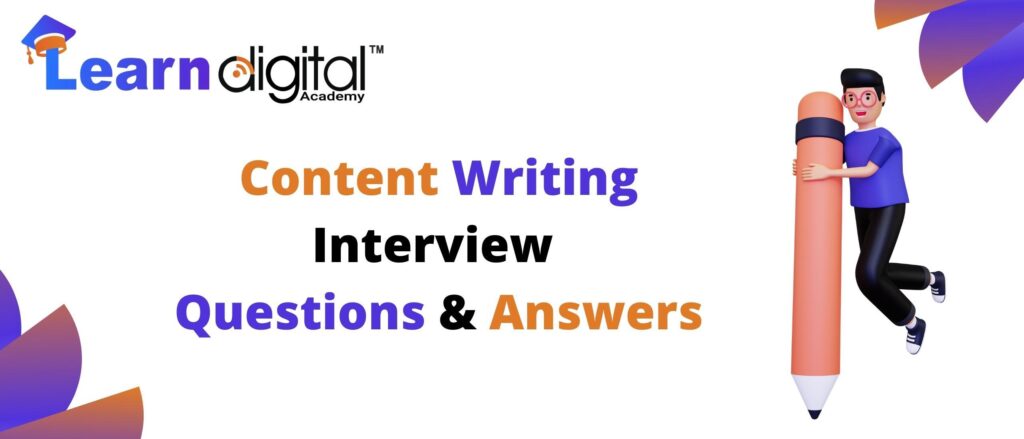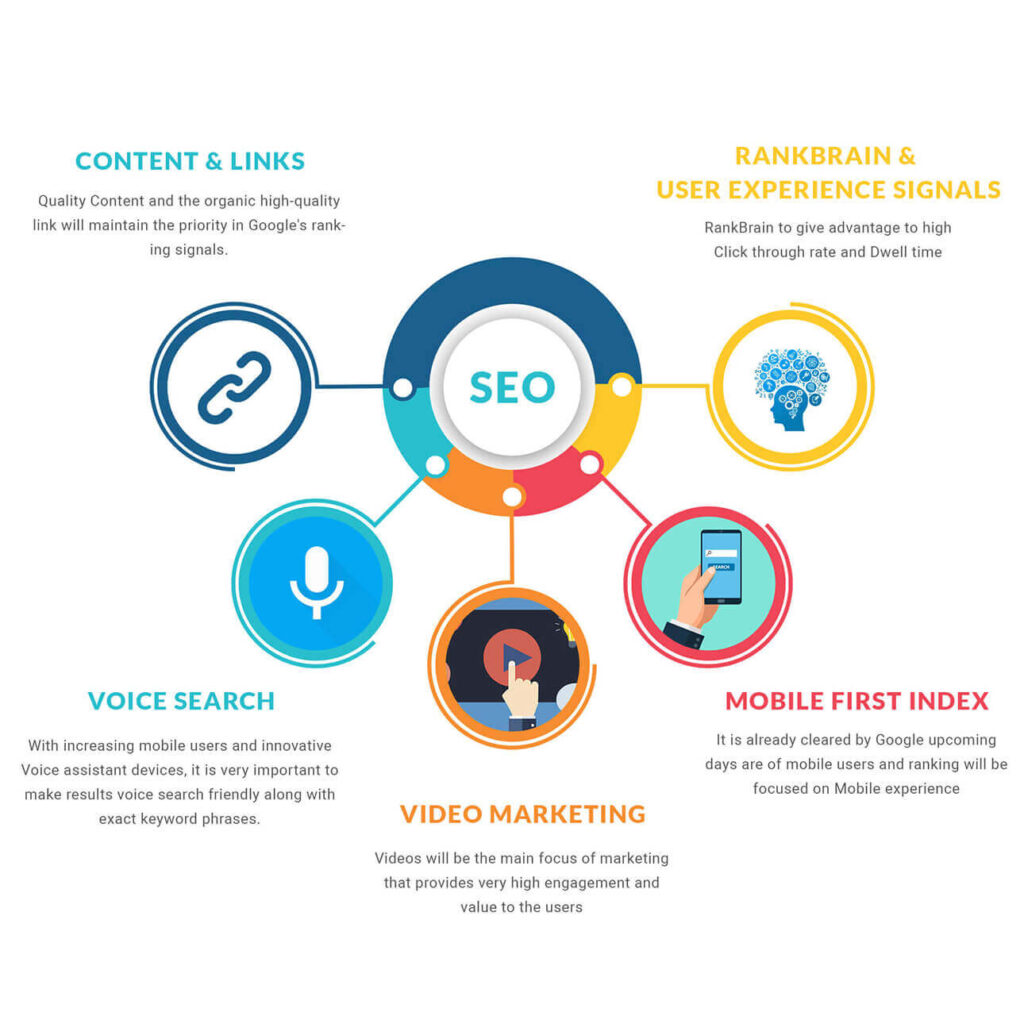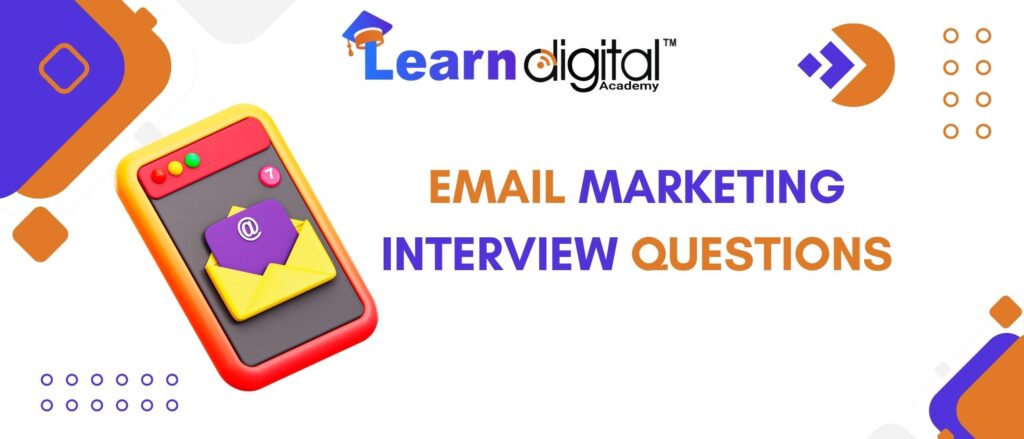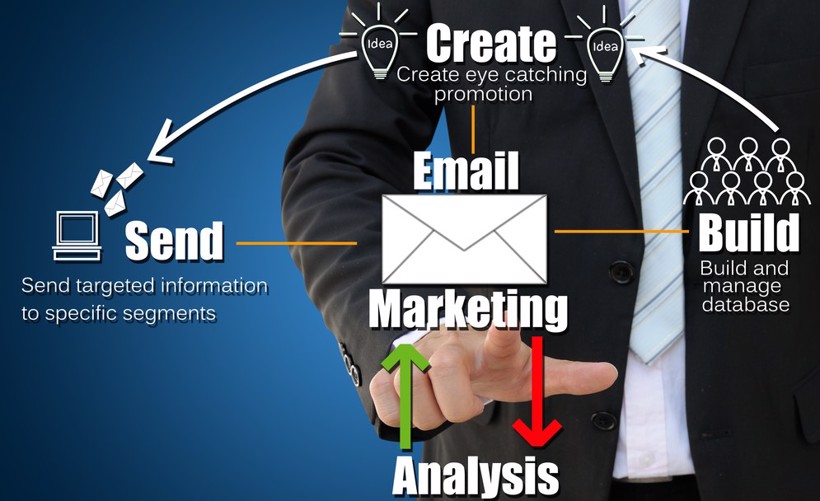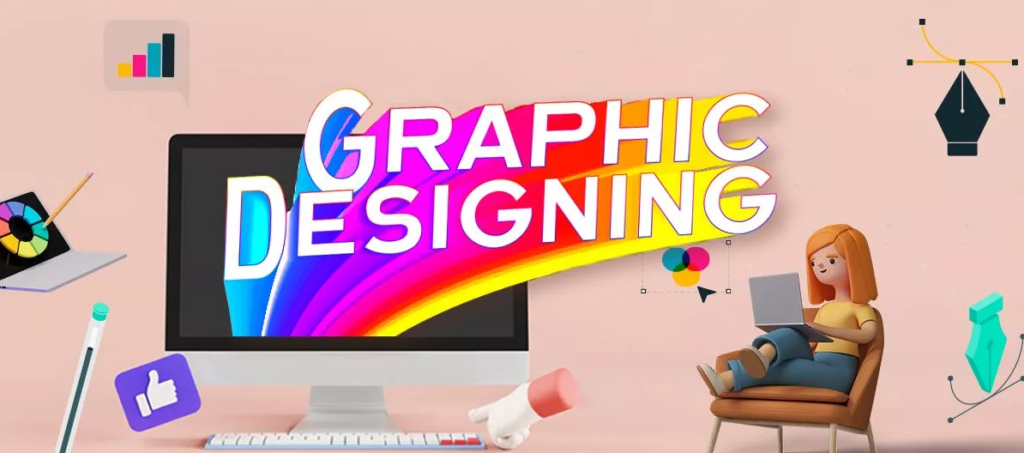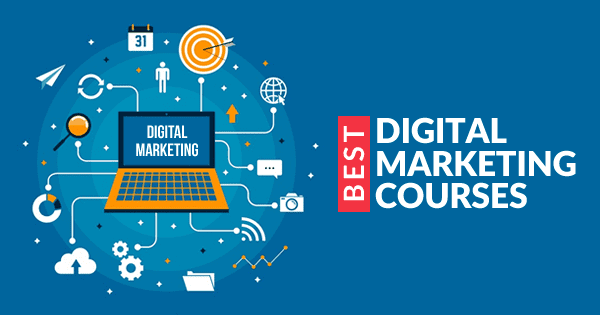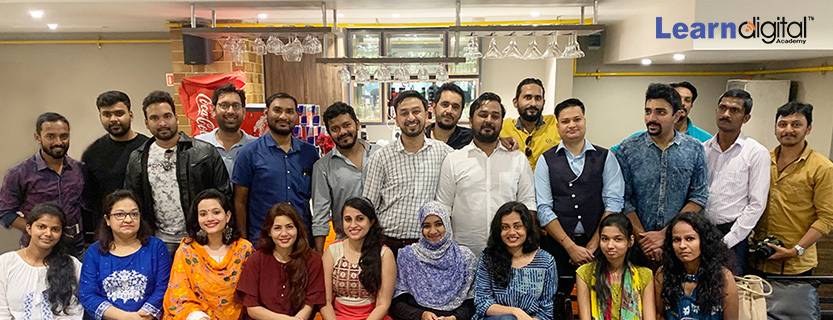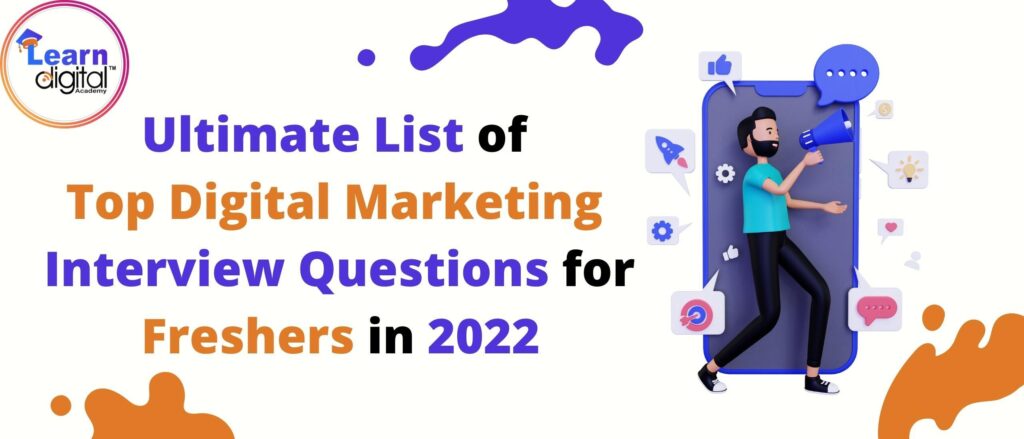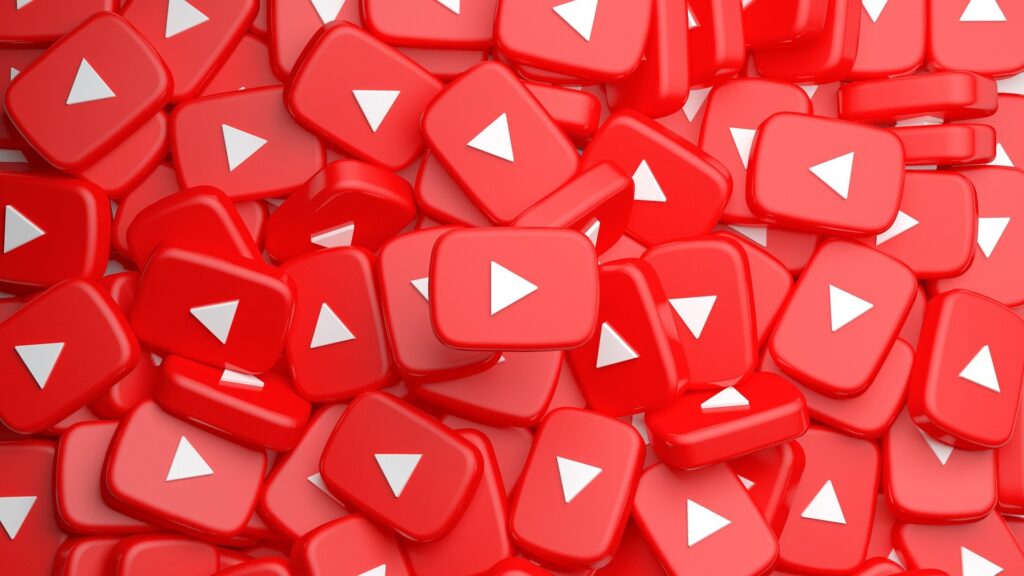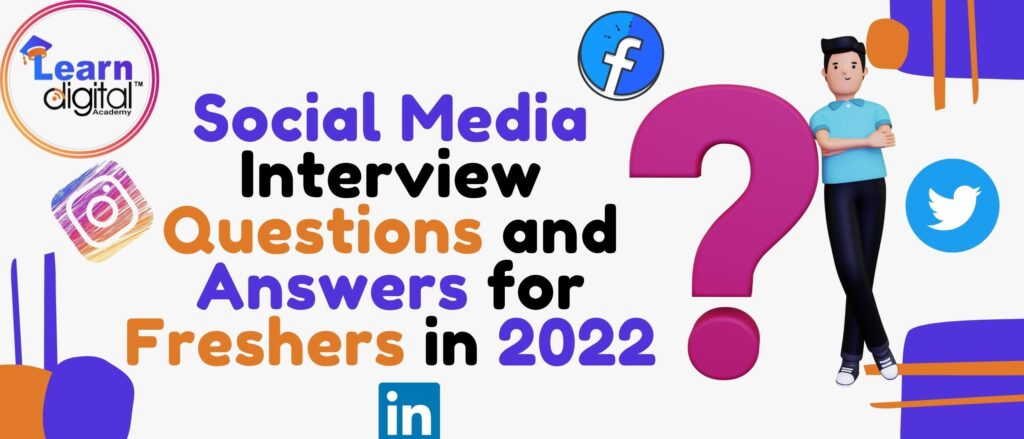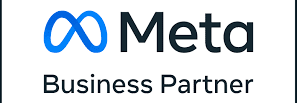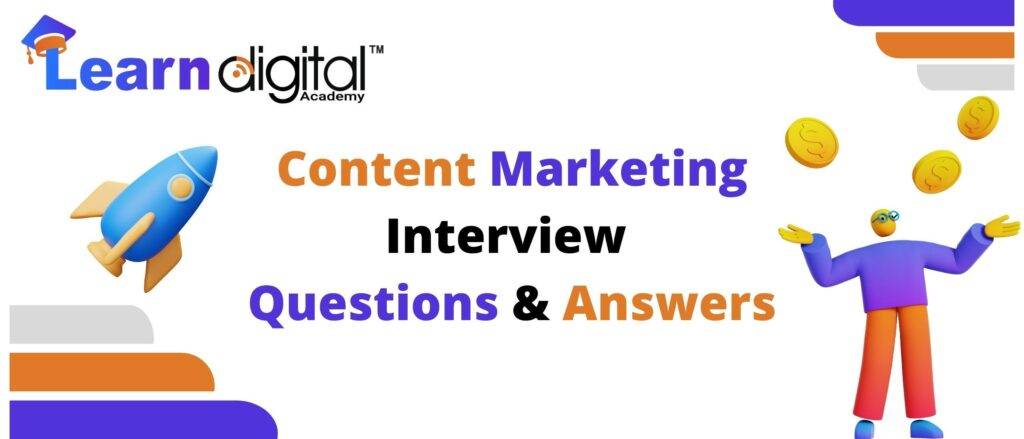
Content Marketing Interview Questions, we have prepared it for you to understand the concepts of content marketing & its role in Digital marketing. Content marketing executives create drive web traffic and increase brand awareness through the spreading of online content.
They are data-driven marketers who know how to build audiences online, plan digital marketing campaigns and manage a team of analysts and creatives.
When you’re interviewing content marketing managers, candidates should demonstrate an understanding of key marketing principles and have excellent interpersonal skills. Bad candidates will show weak leadership traits and struggle to communicate effectively.
Here is the list of content marketing interview questions with answers
1. What is content marketing?
Ans. Content marketing is a strategic marketing approach focused on creating and distributing valuable, relevant, and consistent content to attract and retain a clearly-defined audience — and, ultimately, to drive profitable customer action.
2. What qualifies as content?
Ans. When most people think of content marketing, they think of a blog. And blogs are certainly one of the easiest and most effective means of content marketing available. But they aren’t the only forms of content that can be employed in a content marketing strategy. Any valuable information, conveyed via any medium, can be considered content. Videos, infographics, slideshares, PDFs, blogs, articles, podcasts, white papers, ebooks, webinars – the list goes on and on.
3. How should I get started with content marketing?
Ans. Though it can be tempting to jump right in and start writing a blog without much forethought, the only way to ensure that your content marketing will be effective is to take the time to create a strategy first. Without a clear plan in place, all the time you put into developing content is wasted.
4. What are the steps to developing a content marketing strategy?
Ans. First, determine who your target audience is. Develop a customer persona to whom your content should speak. Then, based on that persona and your company’s brand image, decide on your company’s voice, and the type of content you will be creating. Your content needs to be informative and valuable, as well as interesting and engaging, to your target demographic. And once you start producing content, constant tweaking of your strategy is in order, based on how successful each post is.
5. Does content marketing work?
Ans. What does it mean that your content marketing is “working?” In general, this means it’s supporting your marketing and business goals. Here’s a simple way to track your content marketing program and, more importantly, how to communicate this to your team and management.
6. How does marketing without talking about or promoting our product/service help us create leads and sales?
Ans. Your current or future customer is not interested in your product, they are interested in solving a problem or challenge, usually both organizational and personal. By leveraging inbound marketing tactics companies can share content with the intention of inspiring their audiences. Instead of pushing out product information, content is intended to stand out based on elements such as authenticity, thought leadership, experience in solving those problems, etc.
7. Why would I want to educate my customers and help my competition?
Ans. Loyalty, building a long-term relationship, and customer retention are three key components … Consumers today are oversaturated with many businesses providing the same product or service. By educating customers, they will make informed decisions and look to you as the subject matter expert.
8. How can content marketing help address our target audiences throughout the customer purchase journey?
Ans. That question gets at the heart of how content should be used. Content should address the motivations and needs of the customer at various points of their process, so that it strengthens their positive feelings about the brand, heightens their likelihood to convert, and increases their customer lifetime value.
9. Do I need to constantly create new content?
Ans. Yes and no. Content creation does need to be ongoing, but there are ways to streamline and simplify the process. One of the easiest and most effective ways of doing so is to repurpose content. This entails creating content in one form and then reworking it several times in order to utilize that same information in other forms, as well. For example, you might write an ebook about an important topic in your industry. Then, you could take the chapters of that ebook, and edit each one to make them into individual blog posts. Next, you could create an infographic illustrating the statistics mentioned in the ebook. And finally, you could give a webinar discussing the content in that ebook. Not only does this approach lighten the content creation load, but it also allows the same content to be consumed by people with different tastes in content.
10. How often should I post fresh content on my site?
Ans. There is still a lot of debate surrounding this question – every industry and every demographic sees different content consumption patterns. But in general, fresh content should be posted no less often than twice a week. As for an upper limit, there is none – studies seem to show that posting once a day, or even several times a day, is a very effective way to drive traffic to a website. It’s just a matter of deciding how much time and effort you can devote to creating content. Google is known to give more prominence to websites that update their data on a frequent basis.
11. How important is it to share my content on social media?
Ans. It’s not important – it’s essential. Posting content to a blog and then sitting back and hoping that visitors will find it is an exercise in futility. In fact, some blogging gurus maintain that only 20% of your time should be spent on content creation, and the other 80% on promoting that content via social media! It’s that vital. Even though Google denies that social shares/likes are not part of their algorithm data has shown otherwise. We encourage to share your content through all your social media channels. When sharing make sure you use open graph protocol so the elements of the share are properly shown.
12. Is guest blogging part of a content marketing strategy?
Ans. Yes! Content creation is content creation, whether it’ll appear on your site or someone else’s. Of course, guest blogging is also an essential part of outreach or digital PR, but the principles of content marketing still apply – you want to create valuable information that will help consumers.
13. Do I need an editorial calendar?
Ans. Some businesses swear by them, others not so much. How important an editorial calendar depends on your individual strategy. However, even if you don’t maintain a full-blown, detailed editorial calendar, you should at least plan out your content a month in advance, noting any holidays or promotion dates you want to mark with special content.
14. How important are keywords in content marketing?
Ans. Despite the constant changes to Google’s algorithm, keywords are still important in content creation. While the standards have been somewhat relaxed, so that words and phrases that mean approximately the same thing as the exact phrase searched for can now pop up in search results, too, it’s still best to include a few mentions of the exact words and phrases you want to be found for. Just remember that your priority is always to write for humans, not search engines.
15. How can I use content marketing to increase brand presence in the most efficient way?
Ans. First, make sure you’re inserting your brand into a conversation that’s relevant to both your offering and your audience. Missing that foundational mark is the content equivalent of getting on the wrong flight.
Secondly, once you’ve identified your broad opportunity, do your homework – find the optimal intersection between conversation volume and conversation saturation. The goal is to tackle the topic(s) that are unexplored enough for you to own and that still attract enough eyeballs to drive your bottom line. That calculus varies based on your product sale point, obviously, but the base principle is still the same.
16. How does content marketing drive revenue?
Ans. It starts by building a strong business case that doesn’t just directly attack people, their teams, or their budgets. I point out that content marketing ROI is higher than the average marketing ROI in every place I’ve looked. (He details how in the original article.)
17. How do we measure content’s influence on sales and revenue?
Ans. That one question drives the best decisions, the best priorities, and the best subsequent questions that drive impact.
Matt Heinz, Heinz Marketing
To connect content to revenue, your marketing and sales teams need to be tightly aligned to the same business objectives, company messaging, and agreed-upon processes. (She goes into detail in her article.)
18. How much is it going to cost?
Ans. Marketers who have limited experience with content marketing often worry that the cost of creating content is just too expensive for their company. The reality is that marketers often expect to pay way more than creators charge for various content assets. (The article covers content creation, promotion, and distribution costs.)
19. What’s our goal? Why are we doing this?
Ans. We were initially more focused on the what and the how questions. When the CEO asked the why question, it forced us to take a step back and get our short- and long-term goals down on paper. We referred to those goals for five years. They served as a great guiding star for the content program.
The goals of content marketing are simple: you build your brand awareness by personalizing your brand; you establish yourself as a thought leader in your industry; and you increase traffic to your website with each post by using SEO-friendly keywords.
Content Marketing Interview questions with answers by Learn Digital Academy
20. What are we missing?
Ans. It’s almost always that the content isn’t focused on creating a permanent change in how people see a situation, the brand, or the world.
21. How do I make my content engaging?
Ans. The answer to this question depends a lot on your particular audience. What’s engaging to teens will necessarily differ vastly from what middle-aged business professionals will find engaging. Speak to your target audience’s pain points or interests, let them see that you understand them and want to help them – and then open up the conversation. Ask questions, and invite them to respond. The beauty of content marketing as opposed to traditional marketing is that communication is not one-way anymore.
22. How can content marketing make me into an industry thought leader?
Ans. There’s a lot of talk about the importance of becoming a thought leader – and with good reason. Getting you known as an expert in your field is exactly what content marketing is meant to do. It’s what creates a sense of trust in consumers, which allows them to feel comfortable making a purchase from you. By creating unique, original content, in which you demonstrate your expertise and answer questions consumers might have, you’ll be on your way to becoming an industry thought leader in no time.
23. Is there a difference between B2C and B2B content marketing?
Ans. Yes and no. The purpose of each is the same, but since the audience is different, your content will also vary. B2B content tends to be more professional and businesslike in its voice – though not always – and the topics will of course be more business-oriented. B2C content, on the other hand, is usually more conversational, and the topics have a little more free range.
24. What should we stop doing?
Ans. I wish people asked this question. Marketing continues to be additive. Yet, to be truly creative – and offer something different and worthwhile – we need to deliberately do activities that make the greatest difference.
25. Where do you get your inspiration?
Ans. We got an opportunity to ask this very question to marketing veteran Tom Fishburne on how he creates these amazing “marketing” week after week. He shares that what appears to be magic is actually ”stacks and stacks of paper and a lot of false turns and playing with ideas that never quite pan out.” In his view, it is ultimately about having faith in and following a consistent process.
26. Is our point of view unique so we don’t sound like every other agency or company?
Ans. Many content marketers and content creators stress out about trying to come up with unique content that no one has ever seen. It’s important to have original ideas, so do your best to come up with as original ones as you can think of. But it’s also important to realize that HOW you craft and present your ideas is what really matters when it comes to originality. Why? Because it’s the only real way for you to create anything that is new. As King Solomon said, “There’s nothing new under the sun!”
That means that your focus and concern should be more on your HOW than on your WHAT.
27. What I am saying is this … Originality is more likely to be found in HOW you present your ideas than in WHAT ideas you present.
Ans. You shouldn’t be tortured by the idea of having 100%, original content/ideas. Instead, you should be focused on the most original presentation of your ideas possible.
I am talking about things like:
Personality – style used to present your ideas
Stories
Examples
Structure – order and way you present your ideas
Attitude – tone
Perspective – viewpoint you take or the angle
These six areas are the real ways to create content that will be perceived as original and that will make your content stand out from your competition.
28. Should I create timely content or evergreen content?
Ans. The answer here is a definite…both! It’s important to have content addressing current events and new developments in your industry – that’s a great way to draw traffic to your site through social media and online searches. But it’s also important to create evergreen content that will continue to attract visitors for months and even years. Otherwise, your entire library of content will continually lose its relevance within weeks of its publication.
29. How can I incorporate big content into my content marketing plan?
Ans. Big content, such as that contained in white papers and ebooks, is an important part of any content marketing strategy. Not only does it demonstrate to your audience that you are enough of an expert in your field to be able to write an entire ebook or white paper about a subject, as opposed to writing only short and simple blog posts, but it also gives you a tool for attracting email subscribers. By offering a piece of big content as an incentive to join your email list, you ensure that you have access to an audience interested in your content…and your company.
30. Is short-form or long-form content better?
Ans. Much debate surrounds this topic. Some studies seem to suggest that short and sweet is best – that consumers want to skim a short blog and be able to get the message quickly. Other research shows that long, in-depth, detailed posts are best at converting. Our answer? Find out what your unique audience prefers through testing. Write some long posts and some short ones, and see which ones are most successful – and then create more like them!
31. How can I create content that converts?
Ans. It’s important to remember that content marketing is just one step in the conversion funnel. It’s only through a combination of SEO, content marketing, social media marketing, outreach, email marketing, and website design that prospective customers are led to converting. That said, content marketing is vital in the conversion process since each page of your website and each informative blog post or white paper plays a distinct and definite role in convincing visitors to buy. Craft different content with each step of the conversion funnel in mind and don’t forget to include a solid call to action.
32. What are the editorial and commercial benefits of creating interactive content?
Ans. The way society consumes content has changed. We can no longer expect users to simply scroll and consume text-heavy, dull, static content placed in front of them. Neuroscience points to a solution: interactive content is shown to awaken the brain and result in increased content memorability. It will power the future of storytelling.
33. What are we doing about voice search?
Ans. Keyword research is more important now than ever. Specifically, in regard to capturing Google Home answers. Google provides most of its voice answers from the featured snippet (i.e., answer box) at the top of search results.
34. How can we get executives to create and share content for the company?
Ans. Getting executives to buy into content marketing is an important step. And getting them to actively participate in your content as your company’s thought leaders is another. You need to put the leadership into thought leadership content and look for those leaders wherever possible.
35. What are some common content marketing mistakes?
Ans. The most common content marketing mistake is to fall back on the old habits of traditional marketing. Writing blog posts that are overly salesy, or that promote the company and its products excessively, is a big no-no. Content should be valuable to consumers, and sales pitches are not only not valuable – they’re off-putting. There’s a time and a place for sales, and it’s not in your content.
36. How do I get people to read my content?
Ans. Promoting your content through email and social media is vital, but even the best promotion efforts can be stalled by a lousy title. Make sure that the headline of your content is intriguing and informative. It should convey an idea of what the content contains, while also hooking people’s interest.
37. How do I measure the success of my content marketing efforts?
Ans. Ultimately, the success of a content marketing plan can be seen in the number of conversions it creates. But it can be difficult to track exact results, as a consumer needs several “touches” before finally deciding to purchase. A visitor may read a blog post, and then see an update on social media, and then read a few emails, before finally deciding to convert. While the blog post wasn’t the immediate cause of the purchase, it was that all-important first touch. So give you new content marketing efforts some time to take effect, and then look for an overall uptick in sales. That’s how you’ll know if things are working as planned.
38. Should I outsource my content marketing, or handle it in-house?
Ans. If you have the time and resources available to you, then by all means, create that content in-house. Get every department on board, get several different employees contributing, and create as much content as you possibly can. But if you don’t feel that you have the ability to create enough quality content in-house, then hiring a marketing agency to help can be the best way to go. They can help you develop a strategy, implement it, and then continually tweak it for the best possible results. If you’d like help with your content marketing strategy, call Zen Media today! We’d be more than happy to put your business on the path to content marketing success.
39. How do we use content marketing to help other people in the organization?
Ans. The beauty of content marketing is in how valuable it can be across the company and not just in marketing. Your head of recruiting can use it to attract the right talent, your communication people can use it to communicate to investors, and your head of training can use it to educate current employees. Too many executives are so concerned about themselves and their own teams that they don’t give an olive branch to others. This question shows me somebody who can really help others accomplish bigger things for the company.
40. How can we make something go viral?
Ans. There’s no guaranteed formula. But no matter the industry, you can increase your chances if your content (1) presents a unique story, idea, or dataset (2) in a way that directly addresses a pain point or creates an emotional response in your core audience and (3) in an engaging format. And that’s not enough. You have to promote the heck out of it.
Leslie Carruthers, The Search Guru Inc.
“I can make this go viral for you.” This one has caused many a PR pro to smack his or her forehead in frustration.
Going viral became a thing back in the 2000s. Quora says the term to “describe rapid and widespread social proliferation of a meme or product” started picking up steam in 2008. I imagine it’s been causing public relations folks headaches ever since.
Truth is, it rarely happens. “If you are a client and a PR firm guarantees they can create a viral video or post for you, end the meeting immediately. This is a promise they cannot make,” says Rob Wynne of Wynne Communications.
The only way to earn media coverage is to work hard at it by honing your message, choosing the right media targets, and being persistent.
41. Can we get beyond thinking we are the best answer and bring in others from our community?
Ans. The reason I love this question is that someone recognized the importance of inclusivity. Being smart by having voices from outside the company could bring others closer to them. It also meant that people outside their immediate network would hopefully share with others and draw people closer in.
As part of this client who asked this question, its editorial calendar now actively incorporates input related to their monthly topics from beyond their industry.
42. What’s the difference between audience and traffic?
Ans. The question hints at where marketing is heading overall. A synonym for traffic is “visitors,” which by definition are people who leave. Today’s best content marketers develop audiences. They focus on subscribers, not visitors; time spent, not views; holding attention, not merely acquiring it.
Traffic = People who visit your website
Audience = People who regularly look forward to consuming your content
Your goal should always be to drive traffic to your content, so you can build an audience.
43. How many buyer personas do we need?
Ans. Depending on your business, you could have as few as one or two personas, or as many as 10 or 20. But if you’re new to personas, start small! You can always develop more personas later if needed.
44. How do we manage all the different audiences?
Ans. For example, instead of producing three original versions of an email, include the same offers and calls to action in all, but change the openings to address each audience’s unique pain points.
45. Why won’t people come to our content?
Ans. The short answer is that people in charge lacked a basic understanding of SEO. A slightly longer answer is they didn’t do link building and outreach, or perhaps they didn’t produce content that was “linkworthy” in the first place.
Imagine a store would open in the middle of the desert. Would you go? Even if you knew it existed, you would probably not go – unless that store had unique value to offer you. If you want people to come to your content, you need to:
Create unique content that they can’t get anywhere else. If you’re just getting started, make sure you start with a WOW factor – for example, invite an influencer to write a guest post or interview a key figure in your industry. That will help you get initial traction.
Invite them to come – Make sure you target the right audience that needs/wants your content and let them know the content is there, be it through social media, newsletters, SEM, or any other relevant channel. Don’t be spammy or salesy, just conversational and friendly.
Be consistent with your content – Make sure to always have fresh content delivered so that your readers have a reason to come back.
Encourage them to share your content so that others can learn about it and to help your content earn organic reach.
46.What are the top 5 skills of a content creator in Digital Marketing?
Ans Creativity, Content, Entertainment, Research, Competitor analysis.
47. How will it work with our existing brand strategy?
Ans. Top respondents can outline how their strategy will consider your brand, industry, and customers. (Bonus points if they include a Venn diagram of the three intersecting.) The explanation should also highlight how their approach is more effective than what you’re already doing.
48. Describe your agency’s creative process. How do you consistently put out great content?
Ans. Any random viral video can demonstrate how one-off fame is possible. But a good content marketing agency should be able to produce compelling content over and over again. Keep in mind that there’s no single silver-bullet blog that will solve all your marketing problems. With content marketing, the whole is always greater than the sum of the individual parts.
49. How do you continuously keep content fresh, useful, entertaining, and provocative?
Ans. The answer to this question should shine the spotlight on an exceptional editorial team, a team that includes editors who are based in strategy and writers who are experienced and specialized. Keep in mind that there’s a difference between copywriters, who specialize in short ad copy and headlines, and brand journalists, who have a background in long-form storytelling.
Also, be wary of in-house staff. A small team of writers should not be writing all the content. You’ll get better results from a content marketing agency partner that comprises a large, distributed network of diverse writers with unique perspectives and talents.
50. Who is Your Target Audience?
Ans. If your intended audience cannot relate to your content or if your content doesn’t answer the questions your audience may have, then it won’t contribute to your bottom line.
People always want access to accurate information that’s easy to digest. As we take a turn to the digital age, long texts are gradually losing engagement and going into extinction as videos, animations and infographics become more prevalent.
Use the formats your audience prefers to engage with and ensure your content is interesting to your audience and provides value. In turn, this will keep them glued to your page and coming back for more!
51. What Roots Does It Have and Where Is It Going??
Ans. Did content marketing evolve from usual marketing? How did this idea appear in somebody’s head? First, the 1880s-1890s have brought us consumer-driven content. Since that time, it has been constantly developing and transforming in an attempt to adapt to customers’ needs? In the modern world, customers have access to any information they want. It’s only their choice of what info to read and what source to use. The whole content market has come about as a response to more sophisticated consumer expectations. If there is anyone to predict what to expect, content marketing experts will be the first ones to deliver it to you.
52. WHY and HOW Does content marketing Work?
Ans. As you already know, content marketing is about the creation, publication, and distribution of content to a target audience. It works because it’s more than empty content, it’s some kind of a dialogue between a vendor and a buyer. By demonstrating value and worth, marketers are convincing consumers that a particular brand should be a part of their lives. So providing users with valuable information is half the key to success. It raises trust in your business and helps to maintain customers engaged. Content marketing knows some secrets of keeping your site on the top of search results using specific keywords. The principle of its work helps to find a key to customers’ hearts through meaningful analysis of statistical data, art, and understanding of human psychology.
53. What Are the Benefits of Content Marketing?
Ans. Valid Relationships
Meaningful and successful content marketing will help you build solid and long-lasting relationships with customers likely to buy from you.
Engaged Audience
Keeping customers around and becoming a valuable part of their lives. With a proper content marketing strategy, your brand’s name will be the first to come to customers’ minds when they need to buy something.
Customers’ Trust
Earn a devoted target audience which is crucial when deciding from whom they’ll buy.
Popularity
Enlarge the scale. Earn more customers, promote your brand to reach a wider audience and increase brand awareness among new potential buyers,
Uniqueness
Develop a unique style. Content marketing allows you to make up your own story, and differentiate yourself from a range of other brands. Show that you’re able to give customers much more than rival companies.
54. How Do You Measure Success?
Ans. When implementing any marketing strategy, you need to know how to measure success and see if efforts are not spent in vain. An insightful analysis will also help you find weak points and find the methods for improvement.
Taken from vertical-leap.UK As you can see from CMI’s The Complete Guide to Influencer Marketing, the metrics you need to measure are different and depend on what you’re trying to achieve.
Chasing the wrong metrics is the biggest mistake that marketers make when it comes to measuring the efficiency of a content marketing strategy. After you’ve identified the right metrics, your next task is attribution. You need to be able to identify which pieces of content benefit your marketing and which platforms your customers are using as they step on the path of purchases To achieve this, you need to gather data from all of your channels (Google, Facebook, email, etc.) and attribute the interactions between all of them to understand how people interact with your content as they move towards purchase.,
55. Why Do My Business Need Content Marketing?
Ans. “Without a content strategy, you’re shooting in the dark – you have no way of measuring performance or spotting opportunities to improve results.” they have written in the vertical leap.UK. This statement pretty accurately described the entire purpose of content marketing in business. An effective online business needs an effective content marketing strategy and let us briefly explain why. Content marketing analyzes the needs of target audiences, searches for the proper ways of accessing them, and how they move between various channels of information. Great content helps influence conversions. Lyfe Marketing pointed out on thought-provoking statistics datum. According to them, the website conversion rate is nearly 6x higher for content marketing adopters than non-adopters.
56. Is Content Marketing Better Than Advertising?
Ans. Content marketing and advertising can both help your website prosper. However, if advertising is a form of attracting attention, content marketing is a method of keeping customers involved. Advertising stops fulfilling its mission right when you stop paying the bill while content marketing is a long-term advertisement.
57. What’s the Difference Between Content Marketing and SEO?
Ans. The difference between the two may seem negligible for those out of the digital marketing world. Forbes experts have closely connected the two notions with an interesting comparison “SEO without content marketing is like a body without a soul”. For a better understanding of the difference between the two, let’s refer to the definitions. We already know what content marketing is, so let’s talk about SEO. According to MOZ, SEO stands for Search Engine Optimization, which is the practice of increasing the quantity and quality of traffic to your website through organic search engine results. So SEO is about making your content as accessible as possible for search engine users and helping it perform effectively. Anyway, content marketing and SEO go hand in hand. A combination of good SEO and successful content marketing is explosive.
58. What to Expect When Hiring a Content Marketing Expert?
Ans. A content marketing specialist is a flock of creativity on the site. A well-written article, an involving post, or any other bit of interesting content is fully created by a content marketing expert. Just have a look at this “Esport betting odds” article. It’s bright, and attractive, and it has everything to satisfy the curiosity of a reader. How do you think it would look if there was no content marketing expert to work on it? So what are the 3 major benefits of hiring an expert?
High-Quality Content Creation
High-quality content is not one article duplicated in multiple pages. It appeals to the customers, has in mind a target audience, and can solve the problem of a reader.
Search Engine Optimization
QuickSprout stated that 97 per cent of online searches are done using a Google property. If you want a target audience to react to your content, you need to help then find it. You need to make a search engine rank your site higher than others, so potential customers can check your blog posts and web pages.
Strategic Content Creation
Business2community.com defines strategic content creation as a combination of art and science.
Science
Every piece of content that accurately reaches a target audience needs a creative approach which is a form of art. A specialist knows to convey a message to a customer in an inspiring and unobtrusive way.
Art
Every creativity needs a scientific background. A content marketing specialist analyses the statistics and looks for types of content (articles, surveys, infographics) that appeal to customers the most. Having received the data, they wrap the information into the content.
59. Why Do Competitor Research & what has to be done in it?
Ans. To be fair, it’s reasonable to give credence to the truckloads of guides and learning resources available out there. After all, if you found them, search engines like Google must’ve recognized them as relevant and effective.
- Know Who to Target
- Use SEO Tools to Sort Your Competitors
- Dissect Their Content
- Study Their Link Building Strategy
60. How much does Content Marketing cost?
Ans. This question can be viewed from two perspectives. First, companies ask how much they’re supposed to spend on a professional. Second, content marketing experts wonder how much they should charge for their services. There’s no precise sum that is spent on content marketing (the cost may vary from $5000 to $50000 per month depending on the dimension of your business, goals, budget, and resources). Nevertheless, we have found something more interesting. According to DemandMetric, although content marketing costs a whopping 62% less than traditional marketing tactics, it generates about 3 times as many leads. The affordability of content marketing makes it a necessary tactic for small businesses that want to maximize their budget.
61. Can you explain why Content Marketing Fails?
Ans. Can it ever fail? Yes. Content marketing is not a magic wand that ALWAYS gives an impulse for your business. Content marketing can fail and frankly speaking the reasons are diverse. Apart from a lack of proper strategy, in Mediaplanet.com, they defined 4 other mistakes that lead to failure.
You missed the sweet pot -a line where the interests of your customers coincide with the interests of your business, You ignored the distribution investment, You have unrealistic expectations, You don’t measure anything
62. How Does Content Marketing Generate Leads?
Ans. Generating leads is one of the basic purposes of content marketing. It helps to attract more potential customers to your business. Most of content marketing, they give 4 major ways in which content marketing generate leads:
It Attracts Qualified Traffic
Yet, traffic is not the most important metric to measure the success of your site, qualified traffic is a completely different story. By “qualified traffic” we mean site visitors that are more likely to become customers than others.
It Demonstrates Your Company’s Expertise
Content marketing gives your users a sense that you care enough to help them answer their questions. It demonstrates that your service can be helpful. It shows that your company can respond to their demands.
It Emphasizes Past Success
A strong content marketing strategy should give proof of past successes which is confirmed by case studies and client testimonials.
63. What Brands Use Content Marketing?
Ans. Despite the common opinion, content marketing is not only for small businesses. According to Content Marketing Institute’s annual research, the vast majority of marketers are using content marketing, including many leading organizations in the world like P&G, Microsoft, Cisco Systems, and John Deere. We must admit that not only these companies do content marketing but they do it right
Final Thoughts
Traditional marketing is becoming less and less effective by the minute. Content marketing is key, especially being 62% more affordable. We hope that having read this article, you now have a better understanding of what its majesty content marketing is, how it works, and why more and more companies chose it rather than old good advertising.
64. What are your personas’ pain points in content marketing?
Ans. Discover the problems bothering people you are reaching out to. It helps create content with the sole goal of solving the actual problems of consumers. After all, that is the main goal of content marketing and the reason behind its success.
>> Pain points can be classified into 4 categories:
>> Financial pain points. Usually, your audiences want to reduce their spending on the products or services they use.
>> Productivity pain points. They want to spend less time using this product or service but boost productivity.
>> Process pain points. Your persona wants to make internal processes more efficient.
>> Support pain points. Your prospective consumers aren’t getting the needed support at critical stages of the buyer’s journey.
65. How to measure the effectiveness of your content?
Ans. At the onset of measuring the content marketing success, look at the people you’ve reached out. What channels do they use? How often do they visit? Consider the following Google Analytics metrics to determine user demographics and behaviour.
>> Page views. It is a basic KPI that shows which page and how many times has been viewed on a site.
>> Demographics. Find out your audiences’ ages, genders, and interests to make sure you are getting a message to the right people.
>> Geography. Define where they are coming from and allocate resources to this geographic area.
>> Average time on page. Investigate how much time your readers spend on the website page to understand if they are interested, skim, or not really read at all.
>> Bounce rate. It shows the percentage of your website visitors who viewed one page and left.
Keep an eye on metrics of social media distribution:
>> Shares. The higher count is always better. It indicates that your content is relevant and valuable for your audience.
>> Follower growth. Remember, it is more indicative of your success than a static number of followers, no matter how large it is.
>> Comments. Welcome any positive and negative feedback to see if your content resonates with your audience.
66. Where should you distribute content?
Ans. Planning content distribution is critical to your marketing strategy. Keep in mind the following practices for choosing your distribution plan:
>> Figure out your audience.
>> Choose the distribution channels.
>> Target content for customers at each stage of the buyer’s journey.
67. What kind of content can I use for content marketing campaigns?
Ans. You can promote your business through different forms of content, including:
>> Articles, blog posts, infographics, presentations, videos, podcasts, ebooks, reports, whitepapers.
68. Do I have to keep creating new content?
Ans. Yes, you do have to keep creating new content. The good news is you can also repurpose one piece of content in many different ways. You could, for instance, take a few related blog posts and repackage them as a free eBook for your mailing list subscribers. Or you could take the main steps in one of your videos and put them in an infographic. Basically, you could turn any form of content into another form of content without worrying about duplicate content sanctions from Google.
69. What types of content will work for our industry?
Ans. Every industry is unique and the best way to find out what will work for you is to research what your competitors are doing. Look for the following from your competitors in order to see what resonates with readers in your industry:
>> Blog content with lots of social shares and comments.
>> YouTube videos with a good number of views, likes, and comments.
>> Infographics with lots of social shares and backlinks.
>> SlideShare presentations with plenty of views and social shares.
>> Podcasts with a substantial amount of positive reviews.
70. What’s the best way to promote content for my business?
Ans. Some of the most basic yet effective ways to promote your content are:
>> Sharing your content with your social media followers.
>> Sending your latest content to your mailing list subscribers.
>> Integrating your offsite content – for example, YouTube videos- to your blog.
71. What would be the 1st piece of content you would create?
Ans. There are varieties of content marketing strategies available on the internet, it depends on the business & its requirements. The most preferred way of content are below,
>> Blog Posts
>> Infographics
>> Customer Testimonials
>> Video
>> Podcasts
>> Quizzes/ Polls
>> Guest Posts
>> Checklists
>> E-books
>> Apps/ Tools List
72. In your opinion what is the most important: paid, owned or earned media?
Ans. There are opportunities on all the three platforms any marketer needs to be focused on all the three media that is owned, earned and paid media.
73. What’s more important: execution or strategy?
Ans. Well, the answer for this will be strategy comes first & then execution is equally important for any digital marketing content creation strategy.
74. What is seasonal content?
Ans. To put it simply, content is seasonal if it’s based on a specific season, upcoming holiday, or major event. However, successful seasonal content requires more creativity and planning than just throwing an upcoming holiday into a pre-planned blog post on an unrelated topic.
75. Any Unique Social Media Ideas to Engage Your Audience?
Ans.
>> Highlight Your Team
>> Create Hashtags
>> Share Your Company Culture
>> Use Instagram Stories
>> Create Images or Graphics for Certain Content
>> Show Off Customer Testimonials
>> Share Articles You Find Interesting
76. Why do you believe that online marketing will be more beneficial to our company compared to offline marketing?
Ans. This is a common question that is asked to beginners who are keen to enter the world of Internet Marketing. Since the most common statement they make in every interview is that “I am interested in Marketing”, the interview definitely wants to understand then why online marketing. The answer to this one can be subjective and you can have your own reasons and preferences, here is our advice.
Talk about the constant technological changes & developments happening.
How online marketing platforms have eased the path of reaching out to a larger audience.
There is a higher capacity to reach out to a larger audience, the relevant audience at a reasonable cost.
A better scope to analyze the performance; online marketing gives a quick analysis of the tasks done, amount spent and the ROI. This helps you grow and understand business and customers faster and better.
Digital Marketing is now used by a small and medium-sized business as well, so there are ample job opportunities.
77. What is your strategy to improve our current business through Digital Marketing?
Ans. Do not be quick to spill out a plan or strategy. It will be advisable to understand the business well in advance, analyze the competitor, identify the strengths and list down the opportunities. Take the maximum input from the interviewer, and note down the pain points. Take considerable time from the interviewer to draft a strategy around these segments. Most of the time, an answer to this can turn the tables, i.e. a smart strategy is a job guarantee, so plan it properly.
78. What is content marketing and how do you decide on what content to publish?
Ans. Be creative with how you would share the insights of the brand and what are the best ways to publish them. Also, talk about how content educates and adds value to its audience; invariably nurturing them to become full-time paying customers.
79. What are the top 5 Cs in digital marketing?
Ans. The top 5 Cs in digital marketing include:
- Content: Your content should be strong and be able to keep customers engaged and should bring organic traffic.
- Creativity: Your content should be creative enough to stimulate the interest of users in the product and services.
- Consistency: You should be able to establish a schedule for all your content posting to maintain consistency.
- Communication: Communication is an integral and fundamental aspect of digital marketing. Your marketing communication should be effective and be able to communicate exactly what is desired by the brand.
- Client customization: Last, but very important. You should offer client-level customisation and create a tailor-made digital marketing plan that perfectly fits their needs.
80. What types of content make up an effective digital marketing campaign?
Ans. Digital content tends to fall under these main categories:
Blog Posts—articles that allow you to identify your audience’s problems (or “pain points”) and ways to solve them.
Guides and eBooks—longer form resources that allow you to explore blog topics at greater length.
Video content—videos that cover topics relevant to your audience (often posted on platforms like YouTube which can then be embedded on your website).
Podcasts—audio content that can be hosted on your website and downloaded by your audience.
Marketing Emails—newsletters and product announcements sent directly to potential customers.
Social Media—a social media presence acts as a tool for amplifying your overall SEO and brand awareness efforts.
81. How do you determine the style or tone of a piece of content?
Ans. Candidates should describe their thought process when disseminating content. They should note that each platform will dictate the tone of the content as different platforms provide different stylistic features and cater to different audiences.
82. Describe the role of data in your job. How important is it?
Ans. Data should be fundamental to the work of a content marketing manager. Candidates should acknowledge that data guides all content marketing strategies and should list ways in which they’ve used data in their strategy formation.
83. Which metrics do you look at when measuring the success or failure of a content marketing campaign?
Ans. Candidates should list significant metrics such as page views, unique visitors and conversions. They should also describe how they use those metrics when making marketing decisions.
84. What has been your greatest success as a content marketing manager?
Ans. This question gives candidates an opportunity to demonstrate their marketing prowess. Look out for stories involving the use of data to change a marketing strategy or lead to better engagement.
86. How do you stay on top of changes in the content marketing industry?
Ans. Content Marketing is a rapidly evolving industry that requires constant self-education in order to keep up to date. Candidates should list reading marketing blogs, being aware of changes to social media algorithms and reading widely on the topic of marketing as their means of staying abreast of change.
86. How would you measure the performance of your content marketing? Can you describe examples of good content you have implemented?
Average Candidate: Focuses on superficial metrics that have little impact on the bottom line. If the candidate rattles off a list of top-of-funnel metrics (page views, likes, shares, comments), it could be a sign that they are not thinking hard about the return on investment of their content marketing.
VS
Great Candidate: They should look at performance holistically, and should be able to bring up relevant metrics specific to the type of content with ease. “Earlier this year, our team launched 4-part video series, a top-of-funnel project that we targeted at high-income young parents. The theme was bad parenting – which was very relatable for busy parents – and the goal was to spark conversation on the definition of great parenting. We improved the play rate by over 30 per cent, and watch time was also strong for this series. The series also brought us 3 times more lead conversions per dollar spent compared to our blog articles.
A weak answer would not identify metrics that matter, and will also fail to see the bigger picture of content strategy, instead of focusing on the content itself. A better answer would include mentions of metrics that are more related to business strategy, which means they can produce content with those goals in mind. Keywords include ‘inform and engage’ readers, SEO-related terms, page views, clicks, lead generation, and brand awareness. Great candidates would have many personal examples to refer to.
87. What is one of your favourite examples of a company that is getting content right? What content do you think is lacking in this industry?
Average Candidate: “I like the content this company produces because it’s sensational and unique. It’s never been done before. I think the content in this industry is too safe and boring, which doesn’t resonate with their audience.”
VS
Great Candidate: “I like the content this company produces because it really appeals to their target audience. If you look briefly at their likes on social media or on the comments on their articles, they’re made up of the demographics of their target audience. The content might be a bit boring or corporate for some people, but clearly, it works to get their brand message out to the right people. I noticed they have certain templates for the way their content is formatted, and while this helps to improve turnover time, it does get repetitive over time. I think it’s definitely possible to come up with more series for more variety in content formats, as well as experiment with multimedia to illustrate their points better.”
This is a more industry-specific version of the question above. They should discuss the strengths and weaknesses of the content producer they like. A weaker answer would only focus on whether or not they found the content interesting. A stronger answer would discuss the quality of the content, considering that they may not be the target audience, and instead focus on whether the overall strategy helps to reach any business goals in its production and distribution. This also gives you a glimpse into the ideas they have, and whether they have a grasp of the content needs of companies in your industry.
Do note that it is easy to prepare for this answer, so you may want to restrict the candidate to companies within your industry or similar, in order to trigger a more representative response.
88. What do you think is the most important thing that needs to be included in a brief?
Average Candidate: “The whole brief is important. If I don’t have enough instructions, how can I deliver the content that is needed?”
VS
Great Candidate: “While the content and the format is important, I think it’s most important to know who you’re writing for and what kind of message you’re trying to bring across. Everything depends on the target audience and the message, from production to how you would distribute the content.”
A good content strategist will know that the same story can be told in many different ways, depending on your audience and objectives. So a good answer would highlight that the writing starts with the target audience and purpose of the content, which would, in turn, help them craft the storytelling and distribution strategies.
You may add on to this question by asking for an example of a company’s content strategy that they think has an obvious mismatch between the content and the target audience, and how they think this could be improved.
89. What is your content strategy thought process? What do you look out for, in what order?
Average Candidate: “The content has to be clear and grammatically correct. I also make sure the writing voice suits the content.”
VS
Great Candidate: “Depending on what the content is trying to say and who it should reach, I look out for voice and tone, the language used, the structure, and how the reader will be viewing the content. Incorporating a brand message is very different from creative copywriting or newsroom editorial writing, so that’s something I would look out for as well.”
Look out for a variety of editorial experiences, including creative, newsroom and branded content. A good content strategist should be able to identify that content for different intents requires very different editorial styles. In their thought process, look out for their ideation journey in sharpening, packaging and distributing the content to reach the target audience and fulfil the purpose of the content.
Do note that content strategists with different backgrounds (like those transitioning from journalism roles, traditional marketing roles or digital marketing roles) may highlight different things. Take note of their strengths in light of what your team is lacking.
90 What do you think our company’s voice is? How would you write this voice?
Average Candidate: “Your company’s voice is like that of an expert, and to write content for your blog, I would use an expert’s language and keywords.”
VS
Great Candidate: “Your company’s voice is like a helpful and friendly expert. I think your main target audience would be people who already have some knowledge of what you’re writing about. So to write content for your blog, I would include helpful insights and leave in some technical terms, but explain them along the way as well.”
If the candidate can identify the tone your company is going for, he or she probably prepared for the interview and took the time to understand your brand storytelling. It also shows experience in crafting brand messaging, look out for the keywords that you associate with your brand. A good candidate will also identify that your target audience will require a certain voice and tone.
Most experienced writers should be able to identify your company’s voice. To build on this question, you can ask for some ideas on how to further your brand messaging, which will be more telling about how well they understand your brand’s direction.
91. What do you like about our company’s content? What do you think we do well? What would you change?
Average Candidate: “I do like that the content is very informative, but I think sometimes they can be boring, and I don’t think anyone is looking for this level of information. I’d add more trendy formats, maybe like short video explainers.”
VS
Great Candidate: “I think the content is in-line with your brand in that it sounds smart and is engaging. But I noticed while you do share your own content on social platforms, you’re not very active otherwise. I think you could maybe share things that appeal to your target audience on LinkedIn more often because volume helps to grow traction on social platforms.”
A good content strategist will be able to pinpoint a few areas where your company might be struggling with, in both content production and distribution. You’ll also get to see how they work with feedback, look out for how they back up why they would change what they want to change. On the other hand, a weak answer would just apply trending content formats to your company, whether or not they may be suitable for your target audience and within your budget.
92. What kind of content assets have you worked on in the past?
Average Candidate: “I like writing social media copy the best.”
VS
Great Candidate: “I have experience with writing journalistic articles, branded insight content and social media copy, but I enjoy editorial work the most. I’ve also had experience pitching ideas for articles or videos to clients as well as internally to editors.”
This will give you an idea of whether they have experience with the written content formats that your company applies. A weaker candidate will have writing experience in fewer areas. Depending on whether your company is looking for an individual to fill a role that’s more focused on producing content according to a tried-and-tested format, or a role that is responsible for innovating and coming up with new content formats, this question will show you whether the individual suits the needs of the role.
93. How comfortable are you with multimedia formats? What other software and multimedia are you familiar with?
Average Candidate: “I have no experience with multimedia, I only write.”
VS
Great Candidate: “I have experience with designing graphics, videography and photography. I picked up these skills because I think all content comes in a package, it’s never just one article, and it’s useful to be able to do more than one thing. I’m familiar with the Adobe Suite.”
Not a must for some companies, but this is always an added bonus. Look out for their experience with multimedia projects and whether they are familiar with terms that multimedia creatives use.
If a content strategist can also communicate with designers, illustrators and videographers, as well as have some ideas on the best practices in those areas, they view content as a string of conversations they have with their audience across multiple platforms and formats, instead of as a singular asset. This also enables them to issue good briefs to the creatives they work with.
94. How do you make your content more SEO-friendly?
Average Candidate: “I search for keywords throughout the writing, and maybe even invisible text. This gets you a lot of clicks very quickly.”
VS
Great Candidate: “I do a quick search on Keyword Search to see what keywords are popular, and then using the keywords sparingly. I also try to write headlines that include longer-tail keywords and include relevant links and image labels throughout the content. I also keep Google Search algorithms in mind while writing.”
This question is meant to show you whether the individual has real experience with creating SEO content that is suitable for a long-term approach. A content strategist who has written with SEO in mind may have experience with tools like Buzzsumo, Semrush, Google Adwords and Keyword Search. They should identify that while SEO can deliver results very quickly, it needs to be utilized in an expert manner, and this excludes spamming keywords.
95. How do you tailor your content to your audience? How do you make a boring subject interesting?
Average Candidate: “I think about what the reader might like to see. If a subject is boring, they probably don’t want to read it.”
VS
Great Candidate: “I consider the reader’s level of knowledge about a topic. If they are familiar with the topic, I can include more technical terms, but if they are more foreign to the discussion, I will use simple language. I will also write in an engaging and compelling manner. A boring subject can be made interesting to the reader if you show them why it should matter to them.”
A good content strategist should be able to identify that technical terms turn readers away, and should be comfortable with translating complicated concepts into writing that is simpler, easier to understand.
96. What content management systems have you used?
Average Candidate: “What is a content management system?”
VS
Great Candidate: “I’ve had experience with WordPress, Wix and Squarespace. I am also familiar with a little bit of HTML formatting for these sites.”
This question is meant to show you whether the individual has experience with the CMS your company may use, for example, WordPress, Drupal, Magneto, Wix and Squarespace. If your company uses an internal CMS, this question will help you suss out how comfortable they are in adopting a new CMS.
97. What experience do you have allocating the budget for content spending? What would you give most priority to?
Average Candidate: “I think written content should have the most weight, and if you skimp on writers you need to spend a lot of time fixing it yourself.”
VS
Great Candidate: “The allocation of the budget would depend on what is the main content format that we will be producing, and at what frequency. For example, if a project is written content-heavy, I will prioritise good writers who may be able to take photos or design graphics, not graphic designers who also dabble in writing. I’d also spend less of the budget on ancillary assets.”
A good candidate will have the foresight to consider that the allocation of the budget is dependent on the priorities of each project. He or she would also point out that money is needed not just for the production process, but also for the distribution in terms of paid ads or boosted posts.
98. Tell me more about a time you managed a team of content creators for a project. Describe a time you disagreed with what they wanted to do.
Average Candidate: “I disagreed with my creatives because they said our branding direction was inconsistent across collaterals. I felt it was consistent, so I just asserted my authority and continued with the project.”
VS
Great Candidate: “Putting together a team based on their strengths and weaknesses is very important. The last time I disagreed with my creatives, it was because all of them had the same editorial background, and I felt our direction was one-dimensional and not brand-focused enough. To remedy this, I put together a set of case studies that illustrated what I had in mind for our content. I also requested help from another team member from the traditional marketing department, to sit down with my team and me to analyse how to improve our content to meet business goals.”
This question is meant for a candidate interviewing for a more senior position with management responsibilities. Instead of steamrolling over conflicting opinions, a good candidate would recognise the underlying problem, and address it effectively. A weak answer may indicate that the candidate has a very top-down style of leadership, and may not take well to more collaborative teams.
99. Content marketing is a tool for digital marketing promotions, strategize the top 10 content marketing strategies
Ans. There are multiple benefits to content marketing strategies, Video Content Will Keep Rising.
- Email Promotion Will Continue Its Charm.
- Create Source Content.
- Increase Engagement on Linkedin.
- Find The Right Topics to Work On.
- Repurpose Old Content.
- Optimize Content For Emerging Search Trends.
- Work on Brand Partnerships & Collaborations
100. Explain what is paid media, earned media, and owned media.
Ans. Paid media is content you pay to place in front of an audience as an ad or sponsorship, while owned and earned are free. Owned media is content you create and control, like your Facebook page or your website, while earned media is content others create about you, like reviews or Instagram posts.

